 |
| A collection of the best drawings of Charles Dana Gibson |
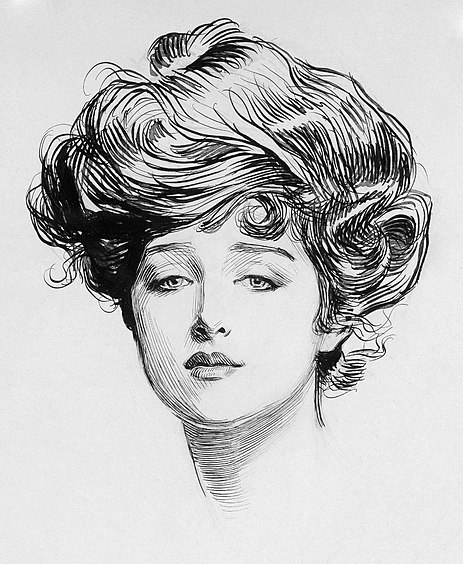 The iconic Gibson Girl was the creation of the illustrator Charles Dana Gibson and first appeared in the 1890's as the idealized vision of female beauty in Gibson's satirical pen and ink illustrations. The Gibson Girl lived on in popular American culture for about twenty years, but her beauty and optimism had no place in the dark years of World War I. However, the influence of this idealized beauty left her mark on American culture so that even in modern times her iconic hairstyle makes a reappearance on fashion runways ever so often.
The iconic Gibson Girl was the creation of the illustrator Charles Dana Gibson and first appeared in the 1890's as the idealized vision of female beauty in Gibson's satirical pen and ink illustrations. The Gibson Girl lived on in popular American culture for about twenty years, but her beauty and optimism had no place in the dark years of World War I. However, the influence of this idealized beauty left her mark on American culture so that even in modern times her iconic hairstyle makes a reappearance on fashion runways ever so often. |
| modern day Gibson Girl |
The Loyola University website, Kate Chopin compares the Gibson Girl to Barbie. In many ways, just like Barbie, she provided young girls with a strong role model that could be feminine and beautiful while playing sports, working and confronting non-traditional female roles. Yet, also like Barbie, the Gibson Girl had her critics who leveled that she was an unrealistic image that real women could never attain. Unlike Barbie though, the Gibson Girl could not grow with the times. She would be forever trapped as an icon of her age. For his part in her creation, Charles Dana Gibson was very humble and seemingly embarrassed by his gal icon. (Find more about Charles Dana Gibson and the many artists that attempted to copy his iconic style here and here.) Critic, Henry Pitz in the book "The Gibson Girl and her America" wrote, "He (Gibson) was not a consciously deep prober, but many of the surface features to which he was sensitive had deep and mysterious roots. He had a lot to reveal about the characters of his era and had more than a little to do with the shaping of it."
 |
| An article that demonstrates Gibson's own humble feelings concerning his creation, the Gibson Girl |
 |
| Gibson's wife Irene Langhorne was much of the inspiration for the "Gibson Girl" and his friend, writer and adventurer Rchard Harding Davis was the model for the "Gibson Man" - the handsome and often unwitting victim of the Gibson Girl's charms. (Illustration Art Solutions) |
 |
| Evelyn Nesbit, one of Gibson's models, but not the original Gibson Girl Read about her involvement in the Murder of the Century here |
 |
| Woman:The Eternal Question |
 |
| The Gibson Girl was often portrayed in the company of men and always holding her own if not getting the best of them! (Art and Culture You Might Love Blog) |
 |
| Read about the Gibson Girl Ice Cream Parlor located in Disneyland Paris here! |
 |
| Accident to a Young Man with a Weak Heart |
 |
| Pen and ink drawing for "The Weaker Sex", illustration by Charles Dana Gibson - A young man on his knees being examined like an insect by curious Gibson Girls. The Turning of the Tide - Charles Dana Gibson - (The Automat) Their First Quarrel - Charles Dana Gibson (The Automat)
Despite his humbleness in confronting his creation, the Gibson Girl made the artist the highest paid illustrator of his time...making up to $1,000 per illustration. The Gibson Girl took over America during her heyday and her image appeared everywhere from print to items like ashtrays and pillow cases. But her grasp on society didn't end there...her tailored clothing and swan-bill corset stood in contrast with her bedroom tousled hair and young women embraced the look with fervor. They modeled the demeanor and antics of their heroine and most of all her fashion. Yet, despite her influence, the Gibson Girl's popularity owed itself to the times...she was a product of them and an emblem for them, which is why her reach could not extend to another generation.
The Swan-bill corset (or s-curve corset) aided the Gibson Girl in achieving her signature slender, tall yet curvy figure, plus it was considered to be a healthier choice of corset. Popularized by the medically minded corsitere Inez Gacches-Sarraute as being less harmful to the wearer since it applied less pressure to the stomach area. 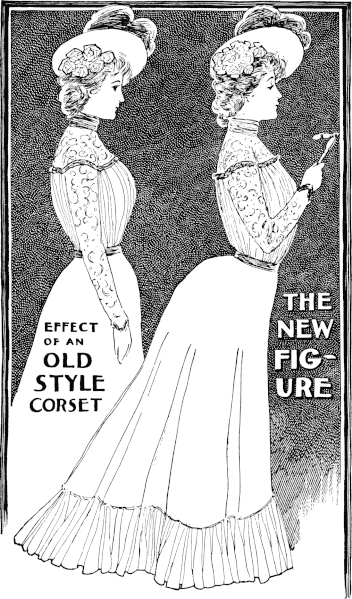 By 1900 the corset was beginning to fall out of favor being replaced with girdles that compressed the hips for the new slender skirted styles. Along with the corset, the Gibson Girl also saw her demise with the arrival of world war and from her restless ghost the free-wheeling flapper would be born...not nearly as wholesome as her earlier counterpart, but just as much an icon of her age. By 1900 the corset was beginning to fall out of favor being replaced with girdles that compressed the hips for the new slender skirted styles. Along with the corset, the Gibson Girl also saw her demise with the arrival of world war and from her restless ghost the free-wheeling flapper would be born...not nearly as wholesome as her earlier counterpart, but just as much an icon of her age.
An issue we confront today with both the Gibson Girl and the Flapper is that we generalize their icon to represent everything from their period. Every dress from the 1920's is "flapper style" and almost every picture of a female or woman's dress from 1900 up to WWI is given the descriptive of "Gibson Girl". Not every American woman living in 1900 wanted to be a Gibson Girl or even dressed as one. Her style definitely dictated much of the fashion trends of her day, but also as much reflected them.
However, fashion alone did not make a Gibson Girl, like the "Flapper", the Gibson Girl was made up of fashion and attitude. She was athletic, slender, tall, beautiful, independent and her clothing reflected that...small accented waists, long slender skirts and tailored, almost masculine styles. Below is a great example from a Kent State exhibit - a simple white cotton shirtwaist, a slender walking skirt and of course, a small necktie demonstrating the Gibson Girl as a new woman. While we can't truly label a piece of clothing as "Gibson Girl" (unless of course it was documented to be worn by one) we can identify some styles that appear in Gibson's depictions and that suited the supposed lifestyle of the genuine article. What follows are some examples that in my mind suit the Gibson Girl's attitude. Clothes that were simple and beautiful and did not wear the wearer, but accented her natural grace and charm...these garments needed to be functional, yet fashionable and ideally suited for the independent and carefree lifestyle of a Gibson Girl.
White damask blouse c.1900, linen skirt c.1900 - Kent State Museum
Cotton day dress - 1895 - Augusta Auctions Woman's boots, United States, 1910-14 Los Angeles County Museum of Art - LACA Summer seaside dress, 1890-1902, Augusta Auctions Silk tea gown, c. 1905 - Augusta Auctions Embroidered white linen tea gown, 1903-1906, Augusta Auctions Gray silk dress made by the Spettel Sisters - St. Paul, MN, ca.1900-1909 Minnesota Historical Society
Walking Suit, American, 1897-98, Metropolitan Museum of Art
Suit, American, 1902-1904, Metropolitan Museum of Art
Suit, American, 1892 - Metropolitan Museum of Art
Sailor suit, American, 1895 - Metropolitan Museum of Art
Suit, cotton, American - ca.1900 - Metropolitan Museum of Art
Wool tennis dress - ca. 1910 - Minnesota Historical Society Two-piece wool and lace dress, 1901-1904, Minnesota Historical Society Linen day dress, created 1901-1902, Minnesota Historical Society Bathing suit, 1900-1910, MET Museum Bathing suit, Wannamaker's (American), ca.1900 Metropolitan Museum of Art Gym suit, 1893-98, American - Metropolitan Museum of Art Gym suit, American, 1890's - Metropolitan Museum of Art Bicycling ensemble, United States, ca.1898 Los Angeles County Museum of Art - LACA Cycling shoes, American, 1895-1900, Metropolitan Museum of Art Cycling suit, American, 1896-98, Metropolitan Museum of Art
It is debatable whether or not the Gibson Girl had a positive or negative influence on the women of her day. She was a type of icon that had rarely existed before in such popularity, but in the reality of things, most Gibson Girls (like Evelyn Nesbit) often ended up as the mistresses of wealthy men...the only way in a world not quite caught up to them that they could live their so-called "independent" lifestyle. Irene Langhorne, Gibson's own wife was probably closer to the ideal than most came and much of that owed to her husband's own forward thinking. Yet, today the Gibson Girl has emerged as little more than a visual stereotype of a time that would forever shape the future of America and of women. We have reduced her to just a pretty girl with big hair and a small waist. It's a shame, since the Gibson Girl was so much more...regardless of whether you loved her or hated her.
|





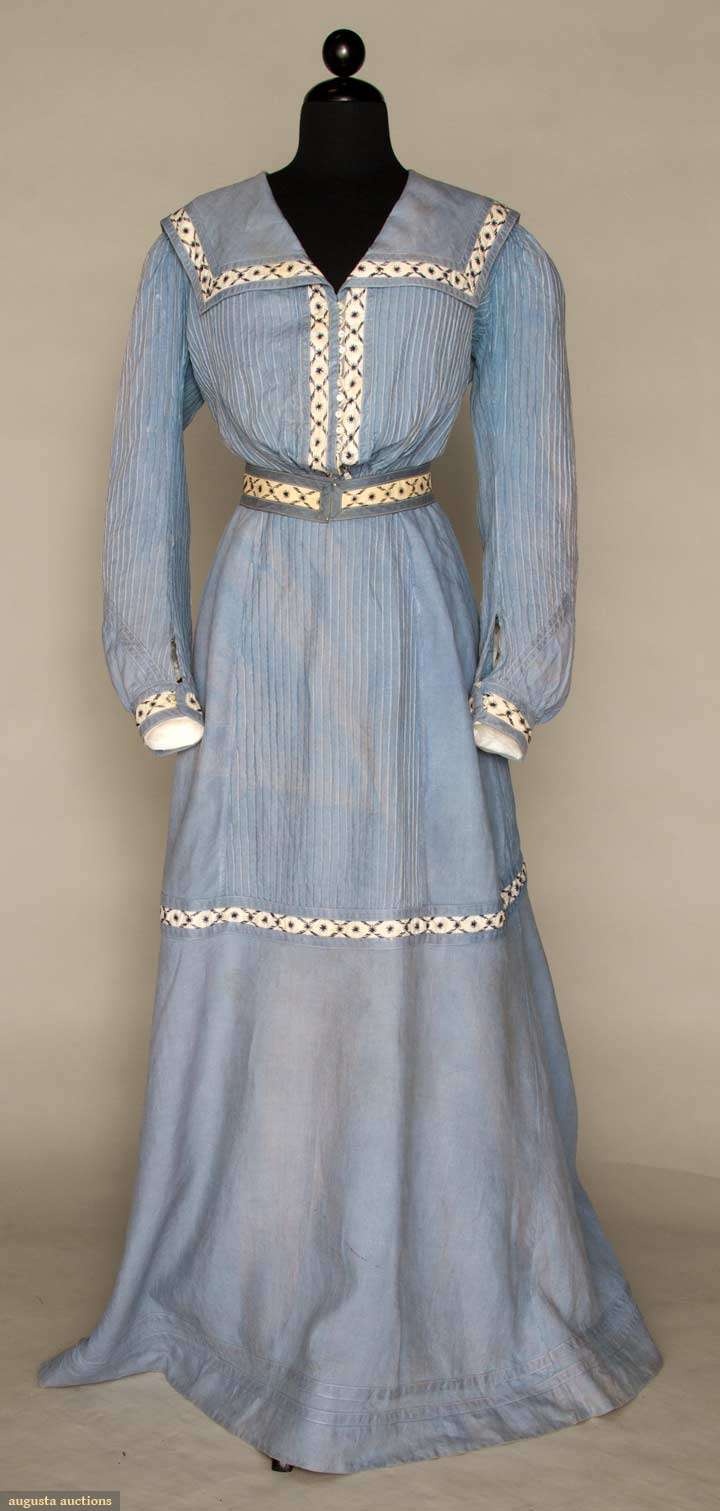



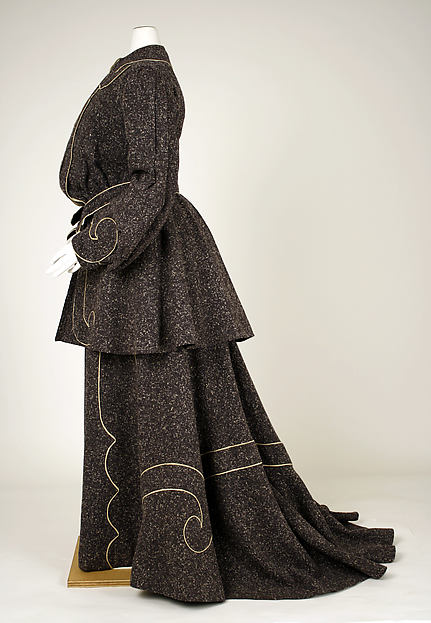
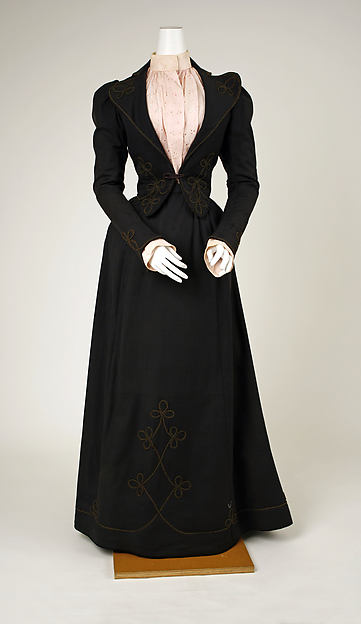
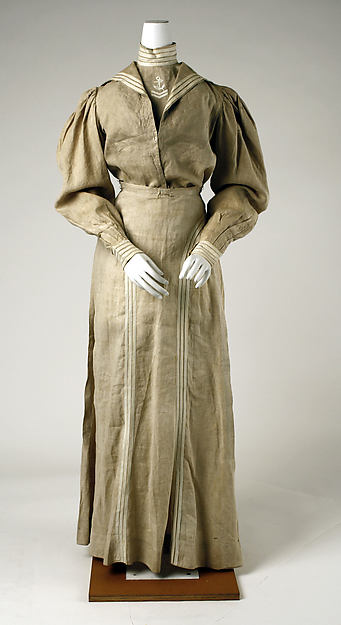

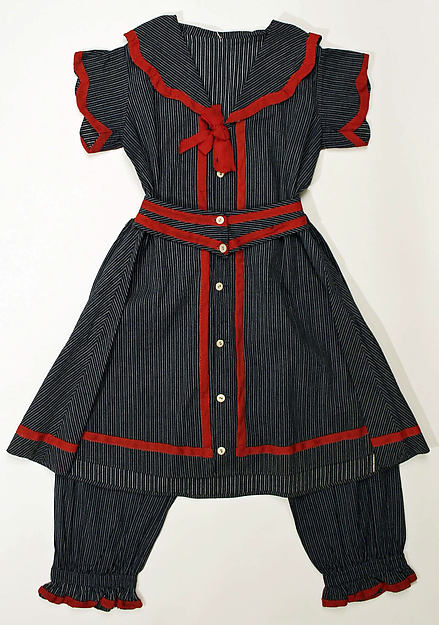

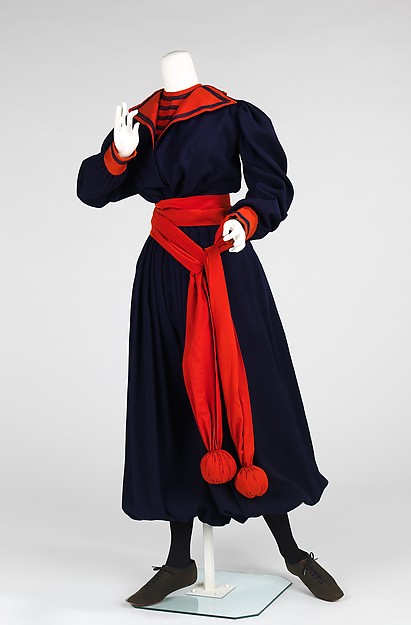
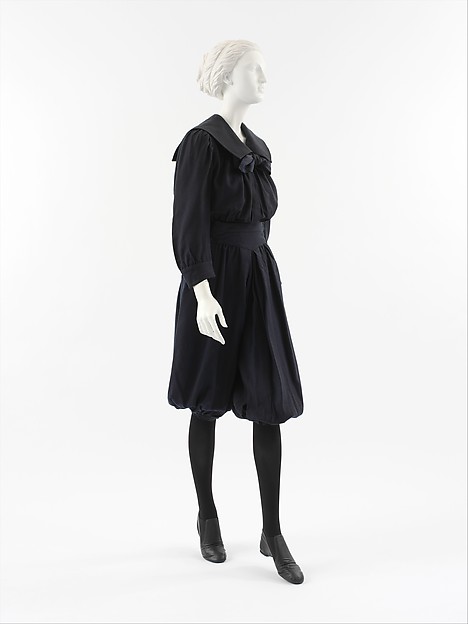
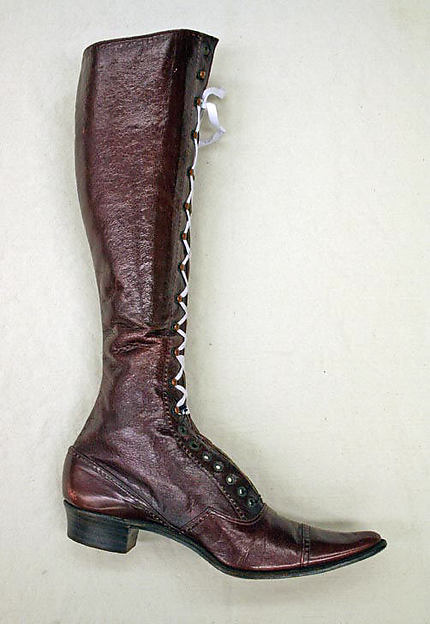
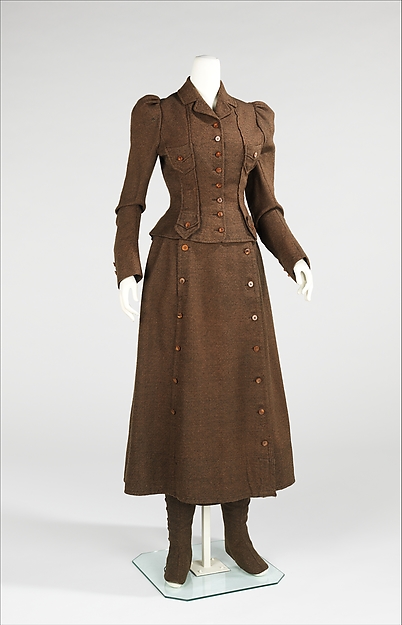

I always loved the Gibson Girl image because she was beauty and strength balanced. She seemed well able to manage herself around the guys - hold her own in any situation and look amazing doing it. It feels like it's either/or these days - maybe that's just my perception. Another great post Tonya from a strong, smart beauty - a modern day Gibson Girl!! Do you see the resemblance? I do.
ReplyDeleteThank-you Susan - I always appreciate and love your comments! :)
ReplyDeleteOK, but can I just say I LOVED the picture you used for the Modern Day Gibson Girl? Just in case you don't know who the model is, her name is Im Yoon Ah, a Korean girl from the girl group SNSD, also known as Girls Generation.
ReplyDelete